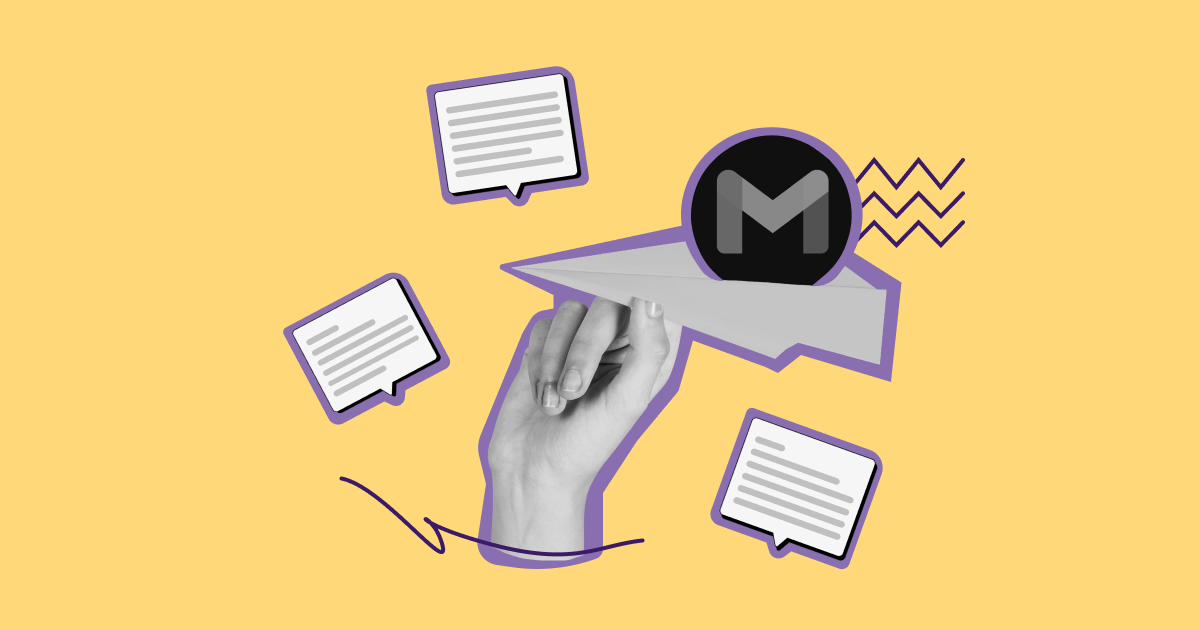Tips for creating effective email templates in Gmail
To really do their job, emails must follow certain rules. Your Gmail templates are no exception. But using these tips in general will greatly improve the potential of your Gmail messages.
1. Define your goals
Whenever you write an email, think of what you want to achieve with it. Getting in touch with a new prospect, setting up a meeting, or sharing company news — these are just a few things that you can do with your Gmail. Each one of these goals requires a different approach.
It’s best to have a separate template for each step of any given communication scenario. Tailor your Gmail messages for any possible situation. Define several recurring scenarios and create basic outlines for each of them. This way you can pick the right one at any moment and reply within minutes.
2. Write like a professional
Keep a professional tone and provide useful information that will get the recipient on the same track as you. Your subject line is where you establish the purpose of the email, and the main body of the text should be focused on more specific details. Write in an approachable and warm manner to leave a good impression — even if the email is strictly business-wise. Remember to use greetings and send-offs to make the message more personal and friendly. Gmail templates are a great way to ensure that you don’t forget about these elements and maintain the necessary tone of voice.
3. Be concise
Get right to the point. You use templates to save time, both yours and your potential clients’. One of the main rules of marketing is not to overstay your welcome. Create short and comprehensible Gmail templates that make it easy to understand what you want and how exactly you can help. In advertising emails, focus on the main features of your product. If you write about company news, pick the relevant ones for the particular audience.
Email template size is another thing to be mindful of. The dimensions are important for the look and feel of your email, and an overblown size can create a negative impact. While designing your template, keep the balance between text and visuals, and edit your images to fit the screen. This way your Gmail message will be easy to read through while staying informative and engaging.
4. Personalize your emails
Speak directly to recipients. Personalized emails are more effective than generalized ones. And it’s not just about greeting by the name.
Do your research and find out as much as you can about your contacts to reflect it in your messages. Apply different personalization tactiques based on the job title, field of work, interests and previous interactions with your business. For example, you can send different proposals to upper and middle managers of the same company. Or remind a potential buyer of an abandoned cart if they didn’t finish the purchase. This will help you cater your emails to specific situations and establish a more meaningful personal contact with your audience.
You can unlock the full personalization potential by using a proper marketing software. Usually, it allows you to use merge tags — marked down fields that automatically fill up with respective entries from your contacts database. Still, you can incorporate the same idea into your Gmail templates.
Let’s say you want to address your contacts by name or mention their job position. To easily do so, use placeholders like [Name] and [Title] wherever you need these variables to go, as in examples that you’ll find further in this article. Then replace them by hand with actual names/titles before sending the email.
5. Use visual elements
Graphic design makes things more memorable.
Add your company logo or a header for a professional, established look. And remember that photos or renders could tell more about your product than wordy descriptions. Templates are of great help here, as you won’t have to struggle with formatting and correct sizing of images each time you create an email.



















